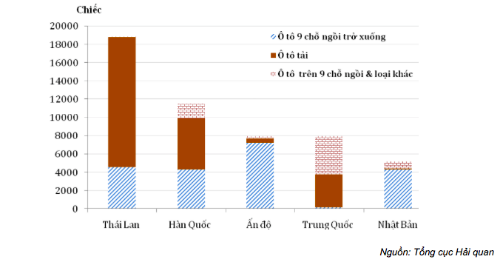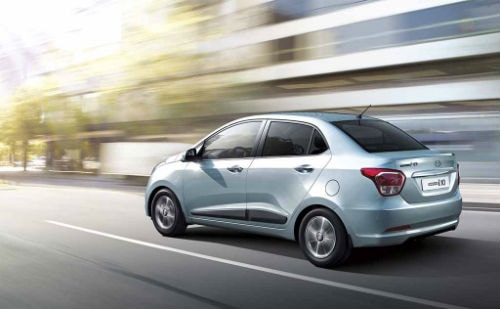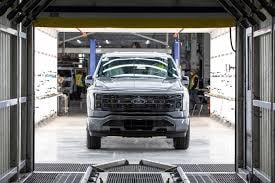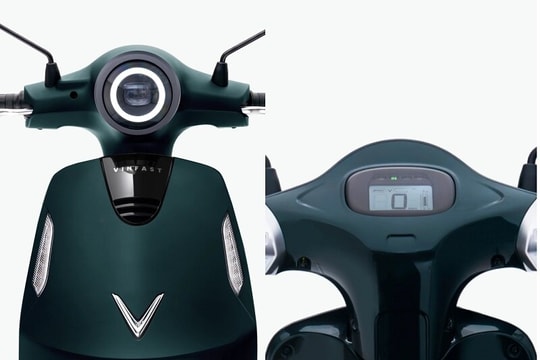Cheap cars from India flood into Vietnam
India is leading and is the largest exporter of cars under 9 seats to Vietnam.
The General Department of Customs has just announced car import data for July and the first 7 months of the year. Accordingly,Thailand is the leading country exporting cars to Vietnam with nearly 18,840 units, but mainly trucks and pickup trucks. The number of cars with less than 9 seats is only over 4,300 units. In addition, Korea, India, China, and Japan are also major car exporters to Vietnam.
 |
India leads in exporting vehicles with less than 9 seats to Vietnam. |
Although India is only ranked 3rd in terms of automobile quantity (after Thailand and South Korea) with more than 7,930 cars (55.7 million USD), this is the country with the largest number of exported cars to Vietnam with about 7,500 cars. The average price of each Indian car arriving at the port is about 7,000 USD.
In July, the number of imported cars from India reached 1,887 units, with an average import price of more than 5,100 USD, showing an increasingly cheaper trend.
According to the General Department of Customs, in 2015, Vietnam imported about 51,500 cars, of which India accounted for half, equivalent to 25,000 cars, a growth rate of nearly 3 digits. The types of cars imported from India are mainly small cars such as Hyundai Grand i10 and Suzuki's 7-seat Ertiga...
According to Mr. Nguyen Tuan - Director of Thien An Phuc Co., Ltd. - a company specializing in importing cars, India is considered a low-cost popular car market. Popular cars here are sold very cheaply due to the Government's policy of giving many priorities to businesses developing the production of small, low-cost cars.
Therefore, a series of world car corporations have poured money into this country to produce small cars in large quantities. With great incentives and cheap labor costs, Indian cars are optimized in cost and have great price competitiveness. That is the reason why the price of Indian cars arriving at ports in Vietnam is lower than the general level.
However, Mr. Tuan also said that most of the cars imported from India have Euro 2 standards - lower than the Euro 4 standards that Vietnam will soon apply. When low-quality cars are out of fashion, companies will push them to markets with high demand like Vietnam.
In particular, Mr. Tuan said that the strong growth in the import of cheap cars from India is due to a number of new taxi companies in Vietnam and these companies have a great need to expand their network and renew their vehicle systems. Accordingly, these cars are mainly imported to serve passenger transport.
 |
Indian car prices are very competitive compared to similar products. |
"Although the original price is low, when adding taxes and fees to consumers, the selling price of the Grand i10 line on the market fluctuates around 350-460 million VND, depending on the version. As for the Suzuki Ertiga, the price fluctuates around 500-600 million VND. For each car imported to Vietnam, businesses only make a profit of around 40-60 million VND," said Mr. Tuan.
Because it is not in the group of countries that have a trade agreement with Vietnam, cars from India still have an import tax rate of about 68%, higher than the preferential rate of 40% of ASEAN countries. However, small cars from India often have small engine capacity. According to the new Special Consumption Tax Law, cars with capacity under 1.5 liters will be reduced from 45% to 40% from July 1 and will be reduced to 35% in early 2017. Cars with capacity from 1.5 to 2 liters will be reduced to 40%. This tax reduction is said to have created a significant advantage for cars from this country.
According to importers, cars from India are one of the new forces in the Vietnamese market with price advantages compared to some cars in the same segment assembled in the country. In general, people still prefer imported products over assembled ones. Cars from India also tend to be more fuel-efficient due to being equipped with small engines.
In addition to India, Thailand and South Korea are also two countries with a large number of imported cars into Vietnam. According to the Vietnam Automobile Manufacturers Association (VAMA), in the first 7 months of the year, the country consumed about 162,000 cars of all kinds, of which 60,600 were imported cars and 91,000 were domestically assembled cars.
According to the General Department of Customs, in July, businesses imported a total of 10,800 vehicles (208 million USD), up 25.1% in volume but down 32.9% in value compared to the previous month. The value of imported vehicles decreased due to the impact of the reduction in Special Consumption Tax applied from the beginning of July for small cars. In total, from the beginning of the year until now, Vietnamese people have spent about 1.42 billion USD to buy about 60,600 imported cars, down 5.9% in quantity and 16.6% in value compared to the same period.In terms of structure,Imported cars with less than 9 seats reached 25,500 units, up 16.6%. Trucks were 26,200 units, up 7%, while cars with more than 9 seats decreased 24.9% to 650 units compared to the same period. |
According to VNE
| RELATED NEWS |
|---|









